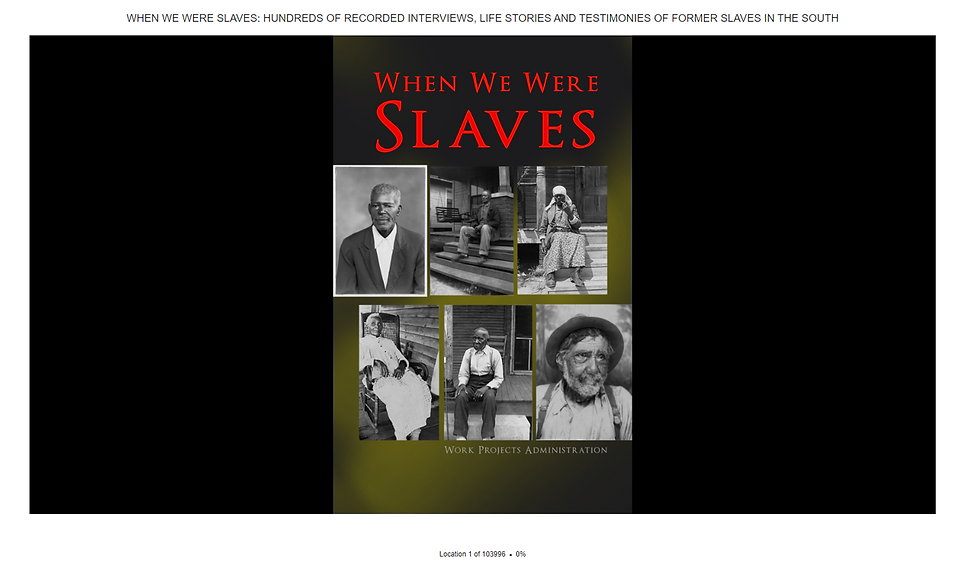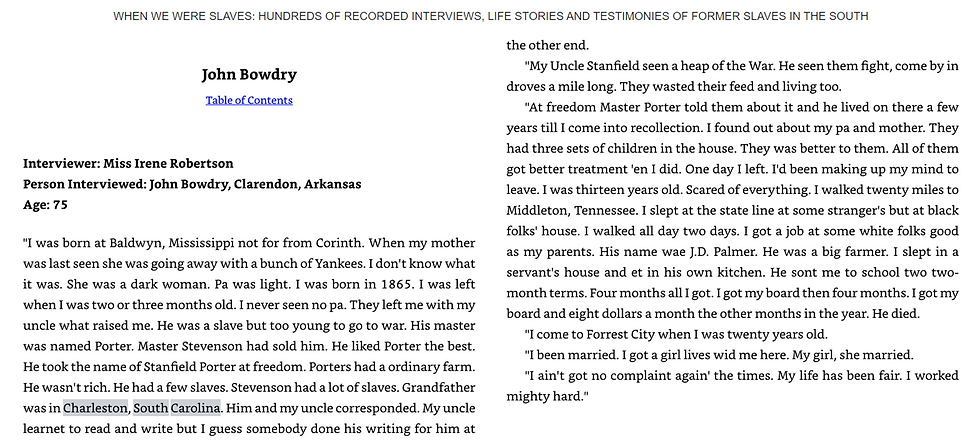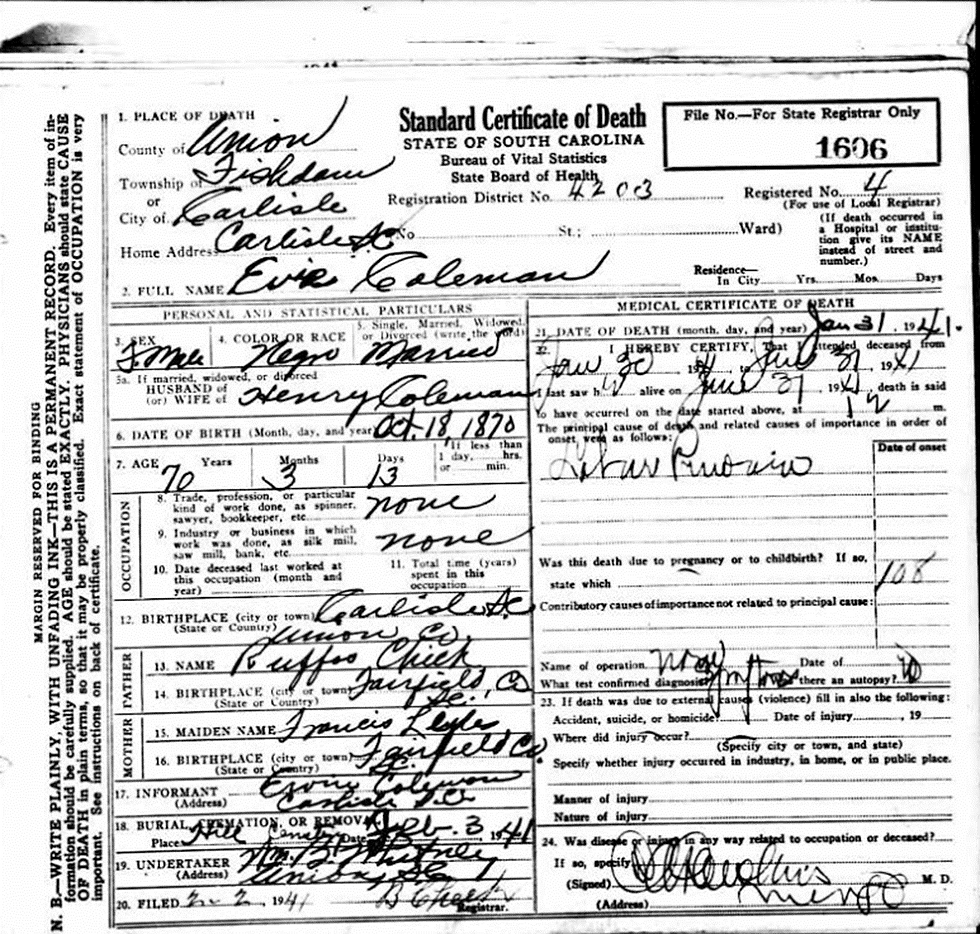Works Project Administration Slave Narratives: Genealogy
- Robin Foster

- Oct 23, 2023
- 2 min read
Updated: Nov 4, 2024

If you're tracing a formerly enslaved person, make sure you go to get this e-book for all the slave narratives: "When We Were Slaves." It is 9226 pages. It covers the areas of:
Alabama
Arkansas
Florida
Georgia
Indiana
Kansas
Kentucky
Maryland
Mississippi
Missouri
North Carolina
Ohio
Oklahoma
South Carolina
Tennessee
Texas
Virginia
They do not have Louisiana:
This is what "When We Were Slaves" looks like when you buy it:

You can look up to find your ancestor or look at the place that your ancestor lived. You might find relatives, other family, someone who knew something about your ancestor. Look at all the slave narratives for that area. Compare to see what you can find.
Look up on the:
1870 Census
1880 Census
Will or probate to see if you can find the enslaver
Local newspaper
Historical societies that have church records with the enslaver and the enslaved
Deed
Bill of sale
Death certificate
FindAGrave memorial
You can also look up other resources on the FamilySearch's Research Wiki.
I looked up "Charleston, South Carolina." The results brought up seventeen places.

I looked at John Bowdry who was born in 1865. He was seventy-five. His grandfather was in Charleston, South Carolina, but John was from Clarendon, Arkansas (page 740).

Former Female Enslaved’s Father and Her Marriage
Henry Coleman is in Spartanburg County, South Carolina (page 6810). Here is part of his narrative:
“Atter de war, come up to Shelton and got to de ‘o’ Hamilton place. I wuz grown den. I seed a young girl dar what dey caalled ‘Evvie.’ Her paw, he had b’longed to de Chicks, so dats she wuz, Evvie Chick. Dar she sets in dat room by de fire. Now us got ‘leven chilluns. …dey wouldn’t have no sassy chilluns like see here in Carlisle.
Evvie, what year wuz it we got married? Yes, dat’s right. It wuz de year of de ‘shake’.”
Evvie: “My paw, Rufus Chick, lived on the Union side of Broad River, the latter days of his life. …The body was perfectly petrified. This was my paw’s body. The canal authorities sent the body to a museum in Detroit. It was January 11, 1877 when my father got drowned.”
Next, I went to find some historical records.
Evie's death certificate:

Then, I found Henry's death certificate:

It is important to record and compare these records. I hope you can see how valuable it is to have all the enslaved's narratives at your disposal. Stay tuned because I will continue to show you how to find historical records from the enslaved's narratives. If you need assistance, just email me: robinfoster@genealogyjustask.com
These occurrences are common with me. If you want to know more about them, then read about how I found the formerly enslaved: My Best Genealogy Tips: Finding Formerly Enslaved Ancestors.





























.jpg)


.jpg)

Comments